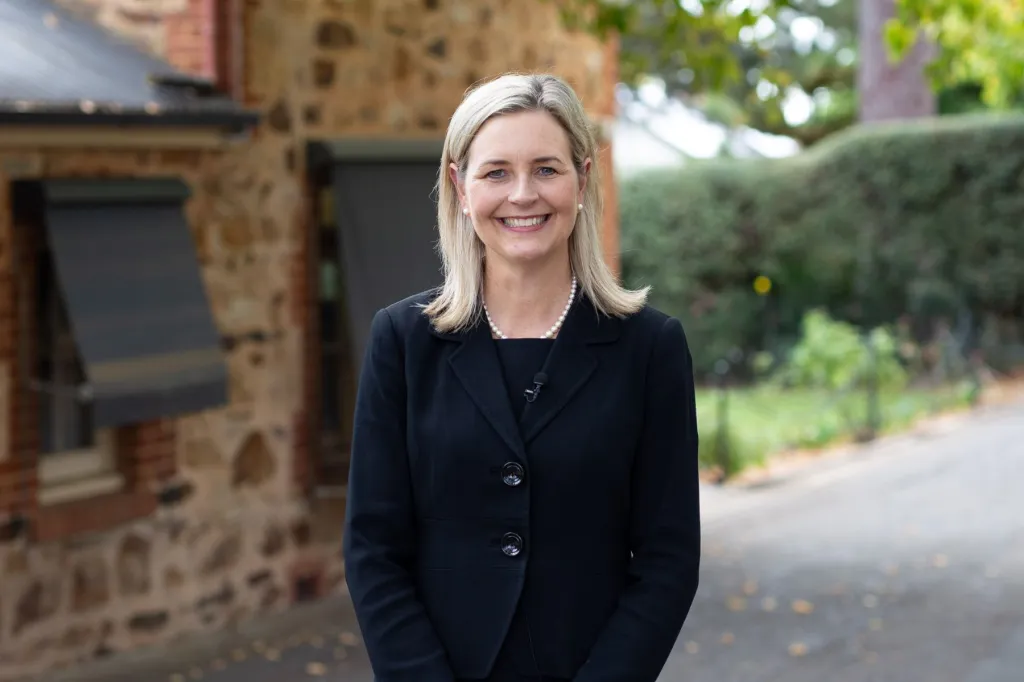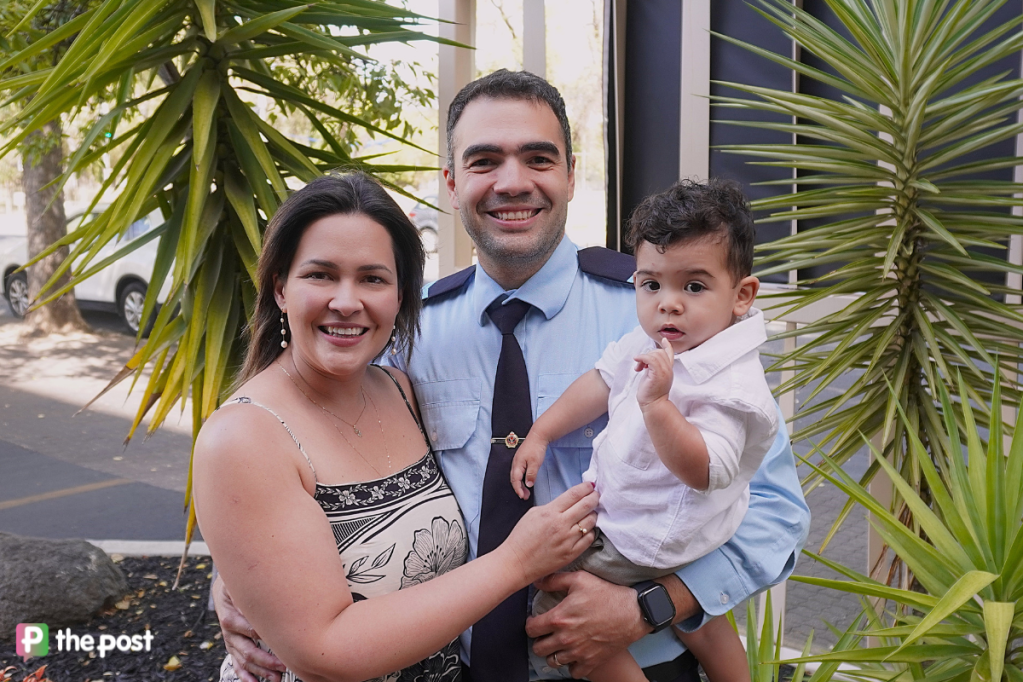10 minutes with… Seymour College Principal Vanessa Browning
Vanessa Browning has been the Principal of Seymour College since 2021. Business Insight spoke to her about the future of education, AI in the classroom, and new pressures on teachers.

Why did you decide to pursue a career in education?
My career in education was profoundly influenced by my Year 3 teacher. Her kindness, care and ability to bring learning to life made school a place I genuinely looked forward to each day. Through her, I came to understand the powerful impact a passionate and dedicated teacher can have on a student’s life.
In contrast, the experience of sitting through lessons with teachers who lacked that connection highlighted just how transformative good teaching can be, not only academically, but emotionally and socially as well.
This realisation took on even greater significance as I reflected on the opportunity my parents gave me to attend a single-sex girls’ school. That environment offered unique advantages and played a key role in shaping the person I am today.
Together, these experiences sparked a deep desire to create similar opportunities for others, to help students develop a genuine love of learning and to grow with confidence both in the classroom and in life.
You’ve been in leadership roles at St Catherine’s (Sydney) and Seymour College since 2015. What have you learnt about leadership over the past decade?
I’ve learnt that leadership in schools is complex, deeply relational and constantly shifting. It demands a unique blend of strategic foresight and emotional presence and requires the ability to move seamlessly between roles. One moment you’re celebrating a student’s achievement at assembly, and the next you’re managing a critical incident that requires calm, compassion and immediate action. That unpredictability and pace mean leaders must be both emotionally agile and deeply grounded in their purpose.
What has become increasingly clear to me is that great leadership begins with listening and with being present. In the busyness of school life, it’s easy to get swept up in operations, compliance and timelines. But the most powerful moments come when we slow down enough to truly hear what our students, staff and families are saying – sometimes beyond words. Whether it’s a quiet student finding their voice, a teacher needing support, or a parent seeking reassurance, being fully present communicates that they matter. And that builds trust, which is the foundation of any strong school culture.
I’ve also learnt that leadership is not about having all the answers. It’s about creating the conditions for others to thrive and to feel seen, heard and empowered. That takes time, consistency and the humility to know that sometimes the most important thing you can do is simply be there to listen, to notice and to respond with empathy.
You’ve also taught across different educational settings – both single sex and co-educational. Are there unique challenges for each setting?
Single-sex settings can offer unique opportunities to tailor pedagogy to gender specific developmental needs, especially in adolescence, but they can also risk reinforcing stereotypes if not handled with care.
You might like
Co-educational environments, while more reflective of broader society, can sometimes obscure the different ways boys and girls experience school and express confidence or vulnerability. Both settings demand intentionality in supporting identity development, equity and student voice.
Do you have a preference: single-sex education or co-education? What gets the best out of young men and women?
Yes, my preference is single-sex education.
I say that not just as an educator in a single-sex school, but as someone who has seen its impact first-hand across multiple roles: someone who attended a single sex school and as a parent to two sons and a daughter.
As a student, being in an all-girls environment gave me a deep sense of confidence and self-belief. It was a space where I could find my voice, explore leadership, and be unapologetically ambitious –without the subtle pressures that can arise in mixed-gender settings.
As a teacher and school leader, I’ve seen how girls thrive when they are in an environment designed with their learning, wellbeing and identity development in mind. Similarly, I’ve seen boys benefit from single-sex settings that allow them to explore emotional literacy, challenge narrow views of masculinity and engage in learning without the need to “perform” socially.
And as a parent, I’ve seen the different ways my sons and daughter have responded to school life and how powerfully single-sex environments have supported their growth when paired with thoughtful teaching and strong pastoral care.
I truly believe that single-sex education, done intentionally and with a focus on belonging and empowerment, brings out the very best in both young women and men.
Your teaching career began in 1997. What changes have you seen across the education sector in that time?
The education landscape has changed dramatically since 1997. One of the most transformative shifts has been the rapid evolution of technology. Classrooms have moved from chalkboards and textbooks to digital learning environments, where students can access information instantly and teachers are expected to be constantly connected and responsive. While this has unlocked incredible potential for innovation and personalised learning, it has also brought a relentless pace to school life for both students and staff.
Technology has reshaped not only how we teach, but how young people see the world and interact with it.
Today’s students are growing up in a digital culture of immediacy and constant stimulation. The fast pace of online life can create a sense of pressure to keep up, to always be “on”, and to curate and project a perfect version of themselves, especially on social media. This shift has had – and continues to have – a profound psychological impact, often fuelling anxiety, perfectionism and fear of failure.
We’re also seeing this pace affect family dynamics.
Parents are navigating the same digital overwhelm as their children. Trying to manage screen time, social media and work-life balance in a world that rarely switches off. Families are working harder to stay connected, and schools are increasingly becoming key partners in supporting that connection through wellbeing education and parent engagement.
At the same time, broader social and economic changes, rising living costs, global uncertainty and shifts in the workforce have reshaped young people’s aspirations and anxieties. Students today are growing up with a deep awareness of global issues like climate change, gender equity and mental health. They are passionate and socially and globally conscious, but they are also carrying heavier emotional loads than previous generations.
What has become undeniably clear is that mental health and wellbeing are now central to our work as educators. We are no longer teaching just for academic outcomes, we’re teaching for resilience, connection and identity.
Stay informed, daily
While the tools we use have changed dramatically, the heart of teaching remains the same: students thrive when they feel known, supported and inspired by the adults in their lives. What matters the most is that our students have teachers who know them well, create a welcoming, relational and responsive learning environment, and help them understand and navigate both the challenges and the opportunities of this complex world.
How has technology changed the role of the teacher in that period?
Technology has completely redefined the role of the teacher, not just in how we deliver content, but in how we connect with students, families and the wider world. We’re no longer just educators; we’re digital guides, wellbeing monitors, and often the steady hand in a fast-moving, hyper-connected world.
Today’s teacher must help students navigate a landscape of constant information, distraction, and comparison. We’re not just helping them access and retain knowledge, we’re teaching them how to slow down, think critically, manage digital overload, and maintain a healthy relationship with technology. That’s a huge shift from the more linear, structured classrooms of the 90s.
We’re also communicating with parents more regularly and often more reactively through digital platforms, which can blur boundaries and increase the emotional load on teachers. In many ways, technology has brought school into the home, and vice versa. That can be a powerful tool for connection, but it also means teachers are expected to be responsive across a much wider sphere than before.
More broadly, technology has placed us in a position where we must be role models for balance. Students are watching how we use technology in the classroom, how we model boundaries, and how we prioritise presence over constant productivity. The most effective teachers today are not just upskilling in digital tools, they’re consciously modelling calm, human-centred learning in a world that often feels anything but.
Ultimately, technology has made teaching more dynamic and demanding but also more important than ever. In a world of algorithms and automation, it’s our humanity, empathy and ability to build real relationships that remain irreplaceable.
What challenges does technology bring to the classroom?
Technology brings undeniable benefits to the classroom – but it also presents some significant and growing challenges that cannot be overlooked.
One of the most pressing issues is distraction. Students are immersed in a fast-paced, digitally driven world where constant notifications, instant access and gratification, and multitasking are the norm. This has affected their ability to focus, reflect and sit with complex ideas. As educators, we’re now spending as much time helping students manage their attention and develop digital discipline as we are teaching content.
There’s also the emotional and social pressure that students carry with them from their online lives. Social media dynamics, comparison culture, and online conflicts often spill into the classroom, impacting students’ wellbeing, self-esteem and ability to fully engage in learning. For girls in particular, I’ve seen how technology can amplify social anxiety and perfectionism, making school feel like a performative stage rather than a safe place to grow.
Equity is another key concern. Not all students have equal access to devices, reliable internet or a quiet space to work at home. This can deepen existing learning gaps and place extra pressure on schools to bridge the divide.
Finally, there’s a growing need for critical digital literacy. Students can access vast amounts of information, but they don’t always have the skills or maturity to evaluate it, question it, or use it ethically. Teachers are now playing a key role in helping students become thoughtful, discerning digital citizens.
Technology is a powerful tool, but we must use it intentionally, with clear boundaries and a strong focus on wellbeing, to ensure it supports rather than undermines learning.
We’re now seeing the rise of AI – how does this change how we teach young people?
AI has become the game-changer.
It forces us to rethink what knowledge is essential when machines can do much of the memorising, summarising or even writing. As a result, schools must now double down on teaching critical thinking, ethical reasoning, creativity and adaptability. Educators will need to shift from content coverage to coaching students in how to ask good questions, evaluate sources, and use AI responsibly and ethically.
What do you foresee as the future of education, and do you think educators and school leaders are prepared?
The future of education is increasingly interdisciplinary, personalised and skills-focused with a renewed focus on human connection. We’ll see more hybrid learning models, partnerships with industry and emphasis on capability learning, including critical thinking, creativity, collaboration, ethical decision-making and emotional resilience.
Technology, including AI, will continue to play a major role not as a replacement for educators, but as a tool to enhance and personalise learning. However, in a world where information is readily available, our job as educators will be less about what we teach and more about how we teach students to think, question and apply knowledge with purpose.
I also foresee wellbeing and identity development becoming central pillars of education, not add-ons. Young people are facing immense social, environmental and psychological pressures. Schools of the future must be places where students feel a strong sense of belonging, agency and hope and where learning is connected to values, meaning and the broader world.
I see inspiring examples of innovation, courage and deep care every day, but I also know that systems and structures don’t always move at the pace required. Standardised testing, outdated curricula and rigid metrics of success can hold us back from reimagining what’s truly possible.
To be fully prepared, we need to invest in the professional growth of our teachers and the capacity of our leaders. We need to create space for collaboration, creativity, and critical reflection. Most importantly, we need to remain open to change – not just reacting to the future, but actively shaping it.








